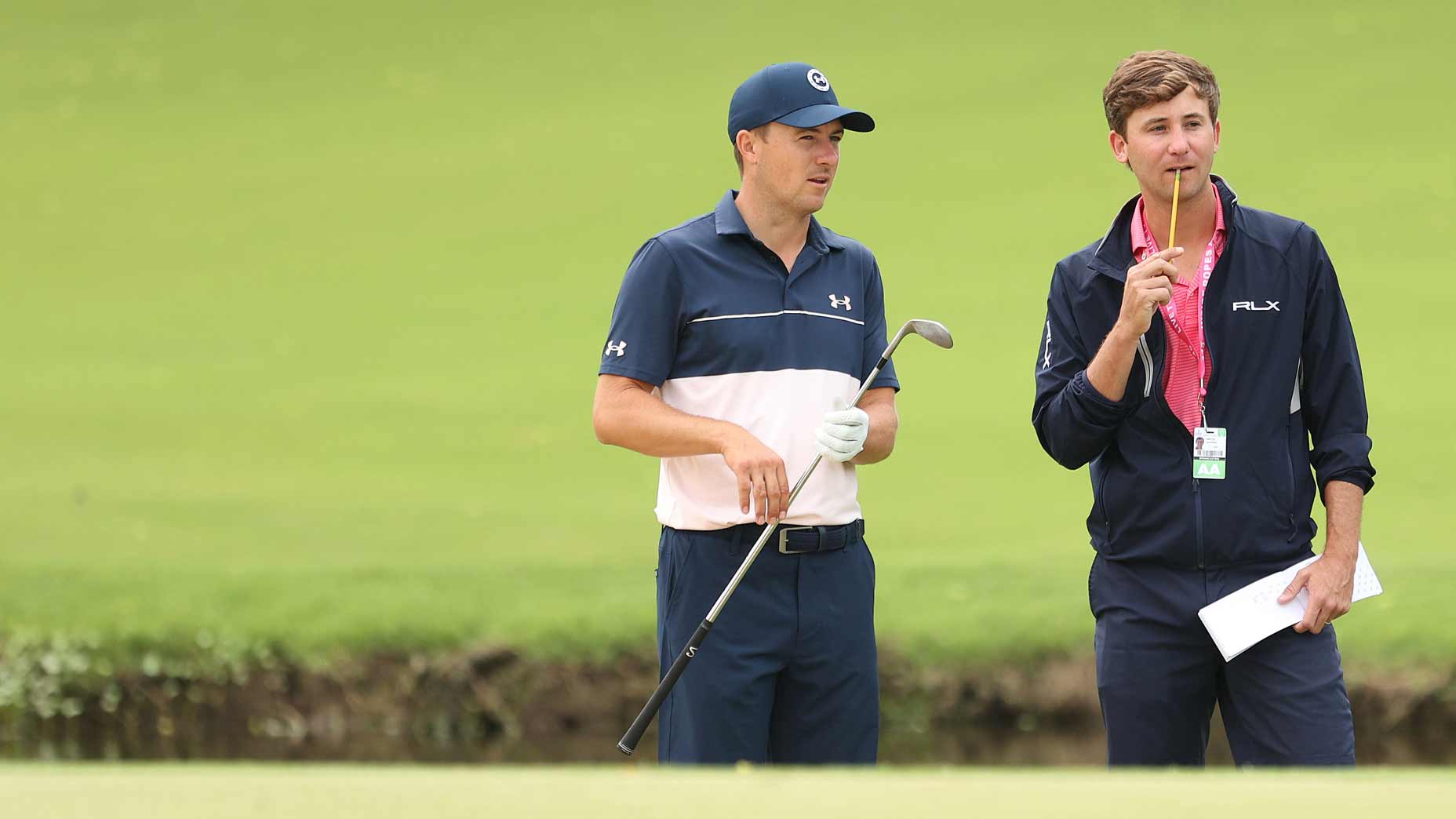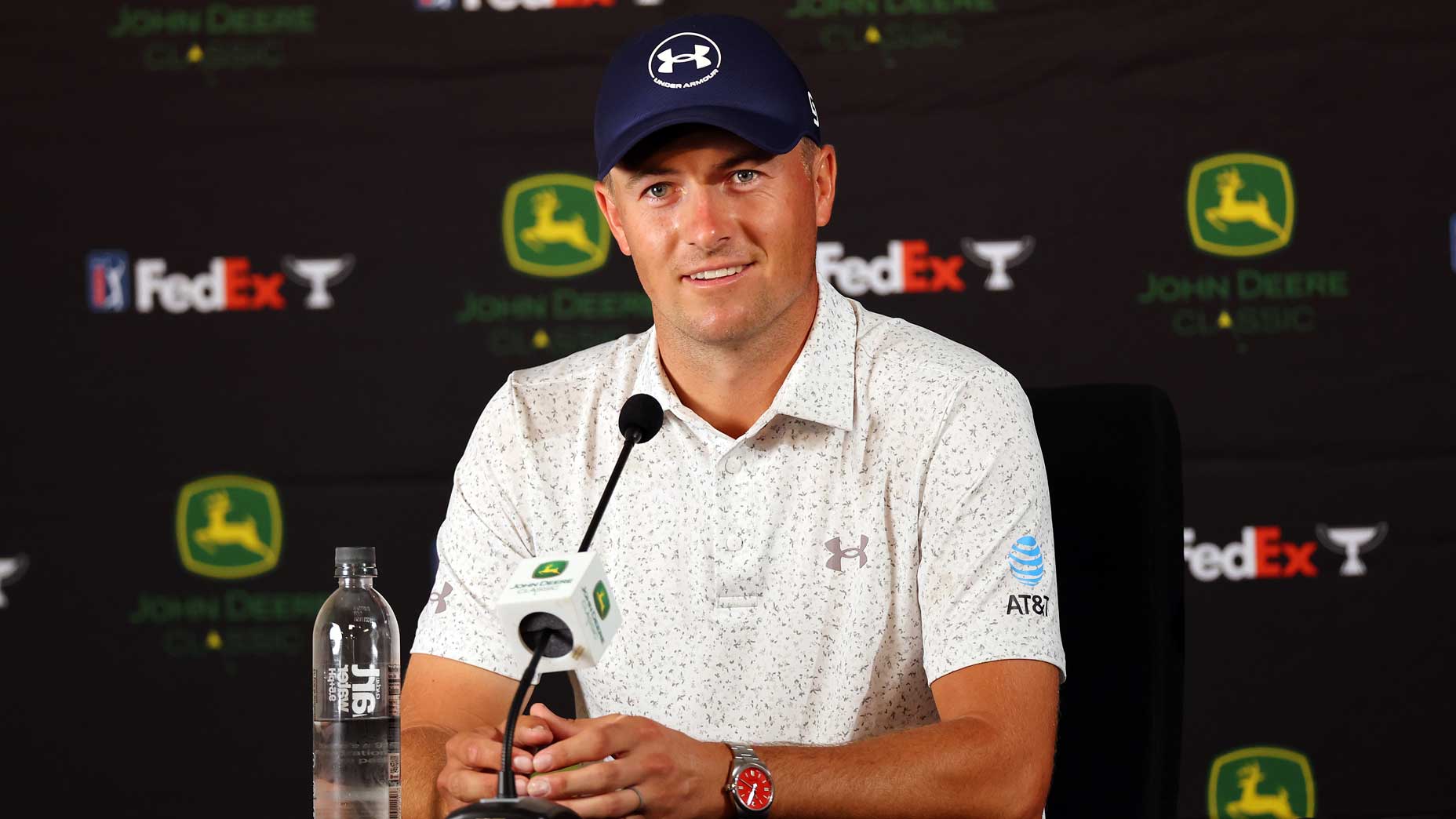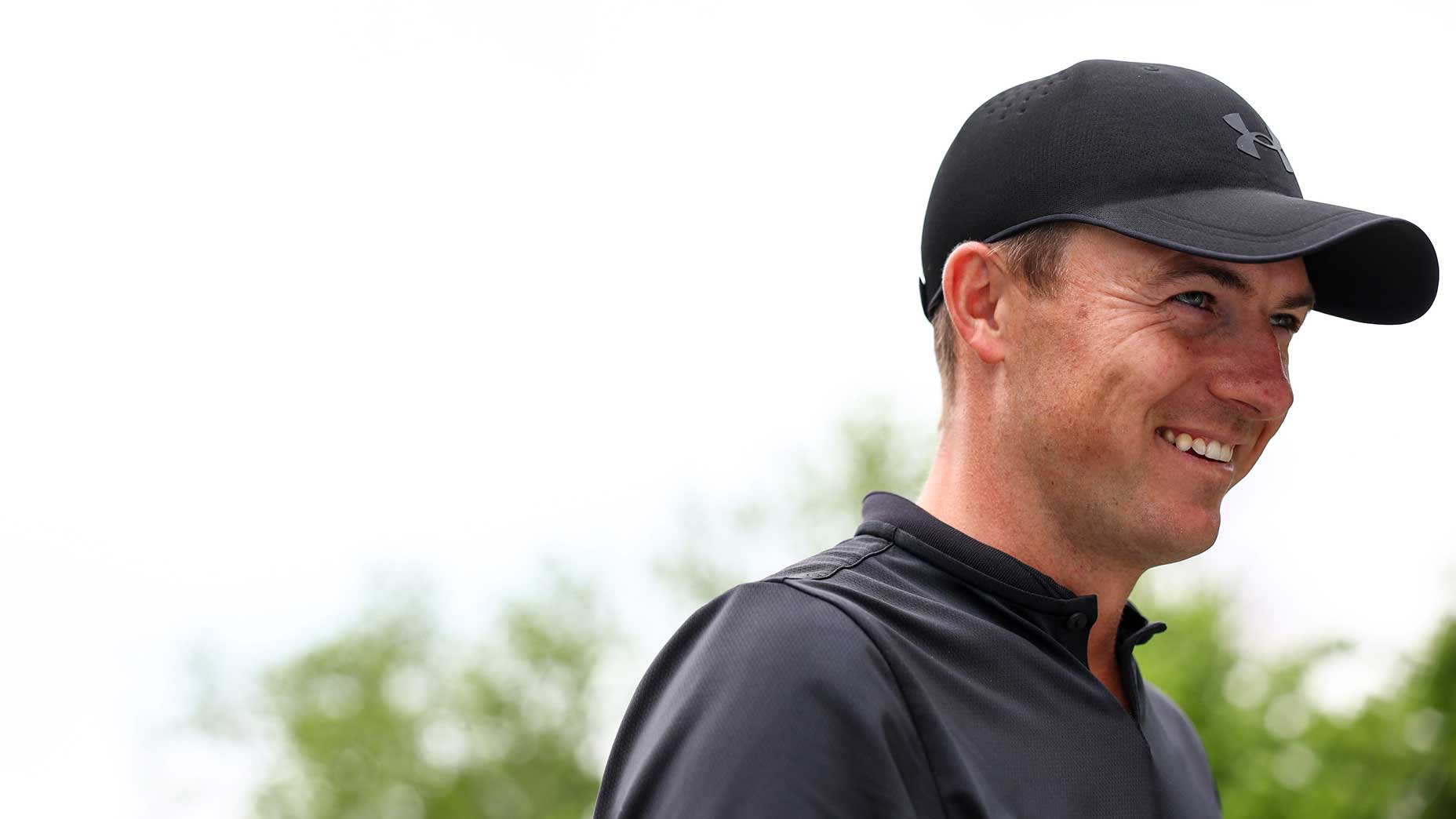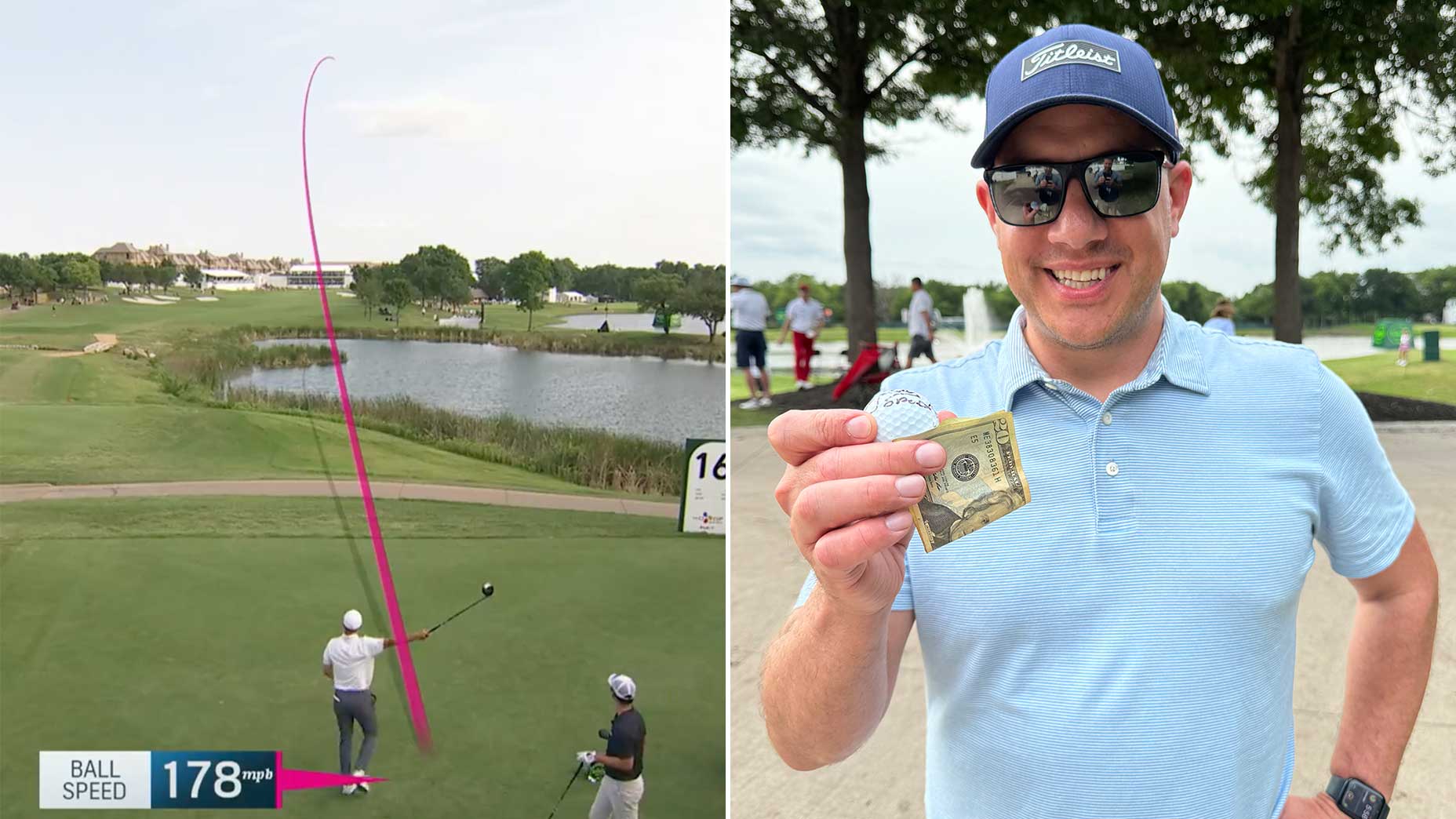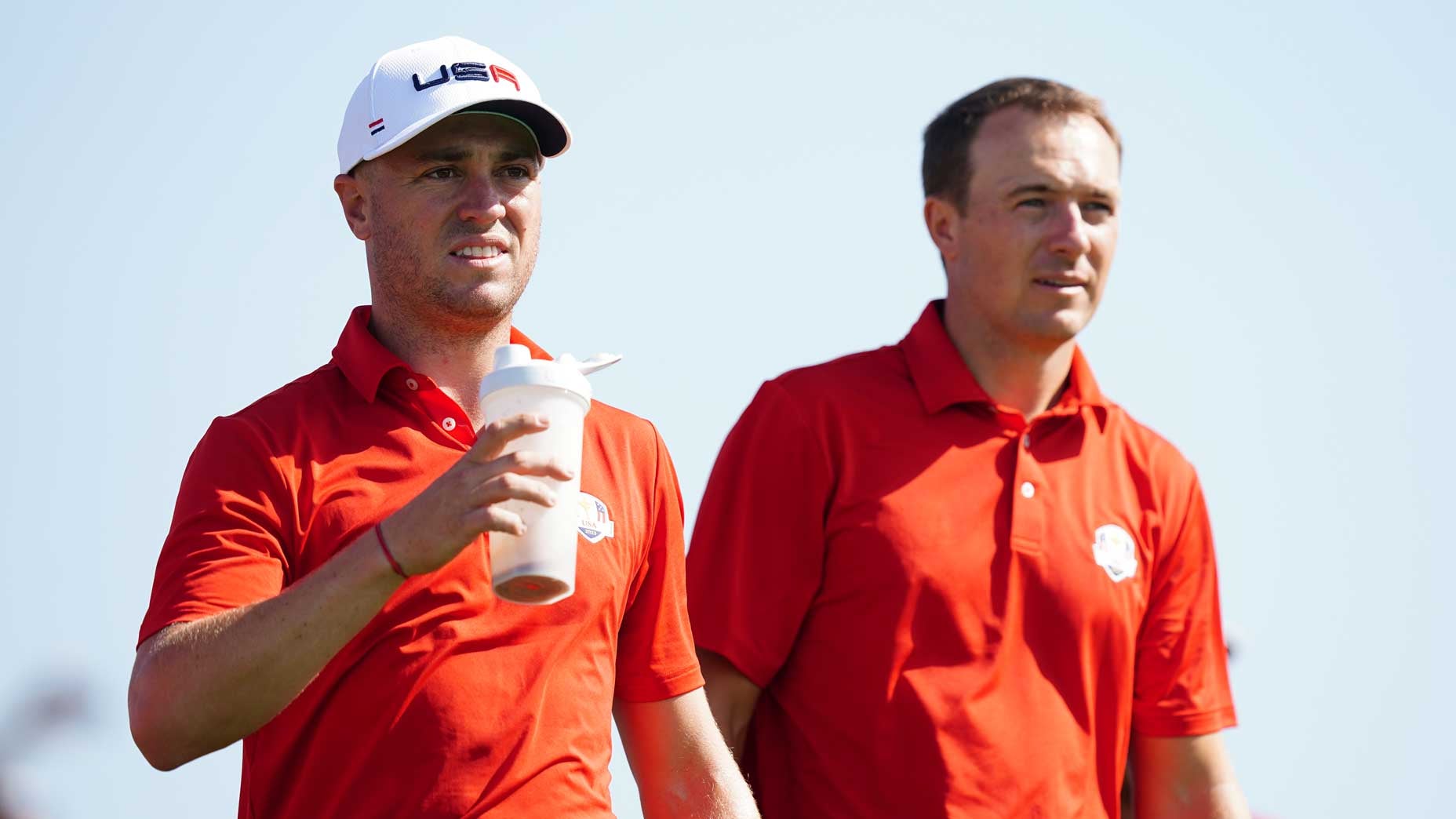Jordan Spieth’s bizarre ‘double divot’? Here’s how he got so unlucky
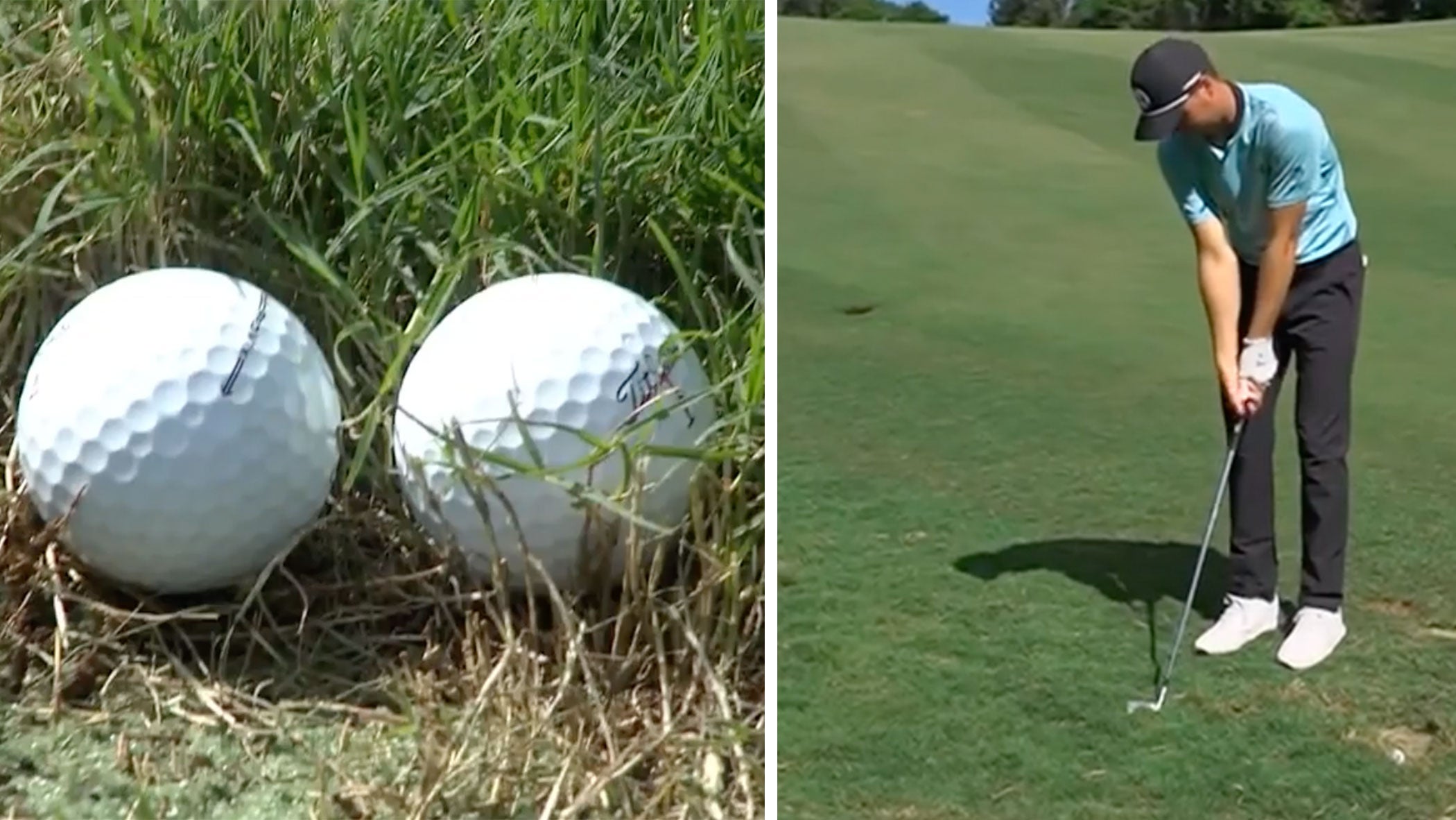
After Jordan Spieth's ball nearly abutted his partner's Sunday, he was left with a nasty lie.
PGA Tour
There are bad breaks, like the couple of divot holes and plugged bunker lie that Jordan Spieth encountered in the decisive moments of The Sentry on Sunday.
And then are really bad breaks, like what happened to Spieth at the beginning of that unfortunate stretch, on the par-5 15th hole at the Plantation Course at Kapalua.
Perhaps you caught it on the telecast: After Spieth and his playing partner, Harris English, had blasted their tee shots down the right side of the hole’s steeply sloping fairway, they discovered their balls had come to rest side by side in the same divot hole in the rough, with less than an inch separating the two orbs.
English’s ball was marginally farther from the hole, so he was away. To give English room to operate, Spieth marked his own ball then moved his marker one club-length away. Trouble was, when English ripped his second shot — from a little over 200 yards — he also ripped out yet more turf from the existing divot hole.
As the Tour explained, “Jordan’s original lie was slightly altered, so he placed his ball in the nearest most similar lie, which was within the same divot.”
The same divot, yeah, but only kinda-sorta the same given English’s landscaping job.
“Yeah, I was kind of in a double divot,” Spieth said later. “I had to place it into his divot, so it was even deeper.”
When golf hands you lemons, though, what can you do but bear down, knock your second shot through the green and then get up-and-down for a gritty birdie? Or, at least, that’s what Spieth did. But then came the fried-egg lie on 16 (and a bogey) and another drive into a divot hole on 17 (par) followed by a closing birdie, which moved Spieth to 27 under for the week. A tidy effort, to be sure, but ultimately two shy of winner Chris Kirk’s total.
To his credit, Spieth didn’t bemoan his unlucky lies, not even the wicked double divot. “They were balls that hit in the fairway and funneled into it,” he said. “Out here balls funnel into the same spots a lot, it’s not uncommon to be in divots. It kind of stunk that it was three holes in a row, but the plug is what cost me a full shot. I still played the others just fine.”
Still, finding multiple divot holes in such a short stretch felt like especially bad fortune, even at a course where balls tend to bunch. Which got us thinking: What are the odds of a Tour pro finding a crater, be it sand-filled or not? The course, hole and field size all influence the probability, of course, but for pros who make, say, 25 starts a year, how may divot holes can they can expect to find? The Tour does not track such matters (note to ShotLink: we’d love to see a Strokes Gained: Divot Hole Recovery stat), so we resorted to some old-fashion polling.
John Wood, the former Tour caddie turned NBC roving reporter, estimated pros find these lies once every couple of tournaments. “Maybe 8 rounds?” he wrote by text, adding, “Just a guesstimate.”
A former Tour pro I queried Tuesday believed the occurrences to be less frequent. “Almost all courses have no divots at the beginning of the week,” he wrote in a text. “They fill the divots at the end of each round. It is rare that you end up in any divots.” He also pointed out that PGA Tour pros hit, on average, only 6 in 10 fairways, so a large number of drives don’t even have a chance to find such a lie.
Try telling that to Spieth.


